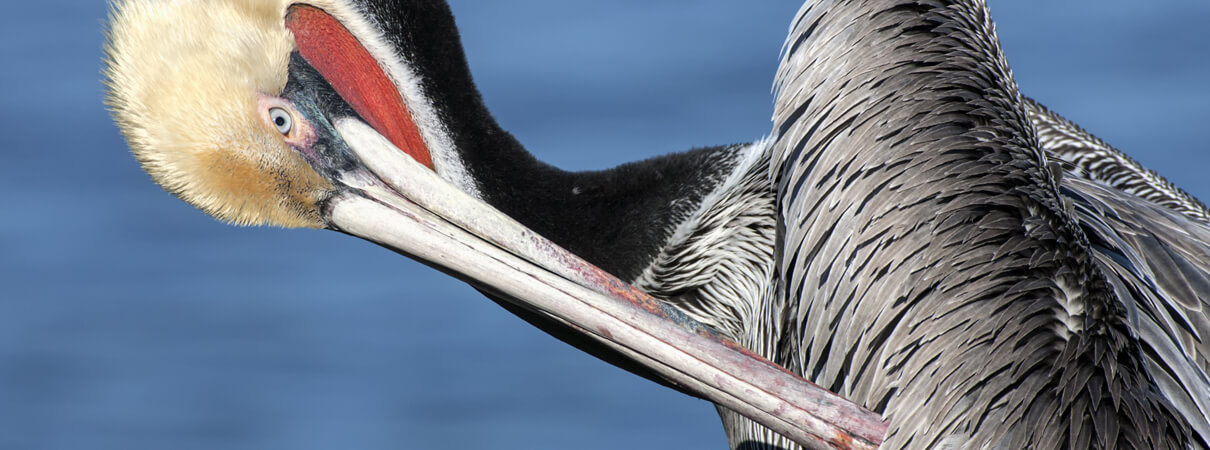Endangered Species Act Facing Its Own Extinction?
For more than 40 years, the Endangered Species Act (ESA) has been one of the nation's cornerstone environmental laws—a lifeline to prevent rare species from becoming extinct. However, the ESA now faces threats to its own existence, notably from some members of Congress. Steve Holmer, ABC's Vice President for Policy, talked with Jennifer Howard, ABC's Director of Public Relations, about the future of this vital legislation—and what people can do to protect it.
Jennifer Howard: What exactly is the Endangered Species Act, and why is it so important for bird conservation?
Steve Holmer: The Endangered Species Act (ESA) is a law passed by Congress in 1973 in response to the decline and near-extinction of numerous iconic American wildlife species, most famously the Bald Eagle.
Since then, the ESA has helped to bring back not only our national bird but the California Condor and Whooping Crane, all of which were headed toward extinction when they were listed under the Act. Once listed as threatened or endangered, the ESA prohibits harming or killing individuals, and protects habitat.

Bald Eagles remain one of the Endangered Species Act's greatest success stories. The species' population dropped to less than 500 breeding pairs in the early 1960s. Today, the U.S. Fish and Wildlife Service estimates that nearly 10,000 breeding pairs live in the contiguous United States and the species was removed from the list in 2007. Photo by SekarB/Shutterstock
Today, the ESA continues to play a critical role guiding the recovery of listed species and determining if there is scientific support to warrant the protection of newly imperiled populations. From a bird conservation perspective, these include the decision to list the rufa subspecies of Red Knot as threatened and the 'Akikiki as endangered. More recently, the Oregon Vesper Sparrow was also proposed for listing.
The need is as great as it's ever been, as threats including habitat loss, invasive species, pesticides, and climate change continue to increase.

The American subspecies of the Red Knot—the rufa Red Knot—is listed as threatened under the Endangered Species Act. Over-harvest of horseshoe crabs in Delaware Bay is a key factor in the species' decline. Photo by Mike Parr
JH: What evidence is there that ESA listing actually helps those threatened populations?
SH: The Endangered Species Act: A Record of Success, a report released in 2016 by American Bird Conservancy, found that for U.S. mainland birds, 78 percent of those listed as threatened or endangered under the ESA have populations that are now stable, increasing (such as the Piping Plover), or have recovered enough to be delisted (such as the Brown Pelican).
The report analyzes population trends and recovery success for all U.S. listed birds, including those in the Hawaiian Islands and U.S. territories.

Listed as federally endangered in 1987, the Black-capped Vireo is threatened by habitat loss and nest predation and parasitism. However, successes in addressing these threats led to a 2016 proposal that the species be removed from the list. Photo by Bill Hubick
JH: What would happen if the ESA were gutted or repealed?
SH: The ESA has been the essential backstop against habitat loss and the risk of losing species forever. Without it, we would lose prohibitions on killing individual birds, protection for critical habitat, and funding for recovery efforts. This would leave already imperiled species in even greater danger.

Once threatened with extinction, the Brown Pelican has recovered to the point that it is no longer listed under the U.S. Endangered Species Act. Photo by David Osborn/Shutterstock
JH: What are the current threats to the law?
SH: In recent years, Congress has sought to exempt ESA protection for some species, but hasn't tried to overturn the law itself. That's about to change. Representative Rob Bishop, chairman of the House Committee on Natural Resources, and other Republican leaders have said that they want to scuttle the ESA. The year 2017 will be a critical one for people who love wildlife to speak out on behalf of this key legislation.

The Whooping Crane population dropped to just 16 birds in the 1940s. Today, due to ongoing captive breeding and reintroduction programs, the wild population has grown to approximately 450 birds throughout North America. The species remains listed as endangered under the Endangered Species Act. Photo by Brian Small
JH: What can people do to make sure the ESA survives the challenges ahead?
SH: Every citizen who cares about birds needs to make their voice heard at this critical moment. Sign ABC's TogetherForBirds petition before Jan. 20; we plan to present the signatures to the new administration and Congress on Jan. 23. It's critical that those who care about birds make their voices heard today.
Also, please forward the link (www.togetherforbirds.org) to your family, friends, and colleagues. Finally, add your name to our email list to receive updates on other urgent actions you can take at critical moments.

Since intensive conservation efforts began in 1987, a total of 22 California Condors has risen to 435, still a small and precarious number. The species continues to be listed as endangered under the U.S. Endangered Species Act. Photo by Jeff Blincow
The American people have shown strong support for wildlife conservation and endangered species in the past. We at ABC believe that threats to the ESA will be strongly opposed and can ultimately be halted—if the public makes its voice heard now.
 Jennifer Howard is Director of Public Relations at ABC. She was a writer and reporter with The Chronicle of Higher Education for 10 years and before that was a contributing editor and columnist with The Washington Post. She writes for the Times Literary Supplement, Humanities, and other publications, and her fiction has been published by Virginia Quarterly Review and others. Follow Jen on Twitter at @JenHoward
Jennifer Howard is Director of Public Relations at ABC. She was a writer and reporter with The Chronicle of Higher Education for 10 years and before that was a contributing editor and columnist with The Washington Post. She writes for the Times Literary Supplement, Humanities, and other publications, and her fiction has been published by Virginia Quarterly Review and others. Follow Jen on Twitter at @JenHoward
 Steve Holmer, ABC's Vice President for Policy, has over 20 years of experience working to conserve endangered wildlife. He also directs the Bird Conservation Alliance, a network of more than 200 groups that builds support for bird conservation programs.
Steve Holmer, ABC's Vice President for Policy, has over 20 years of experience working to conserve endangered wildlife. He also directs the Bird Conservation Alliance, a network of more than 200 groups that builds support for bird conservation programs.


















































